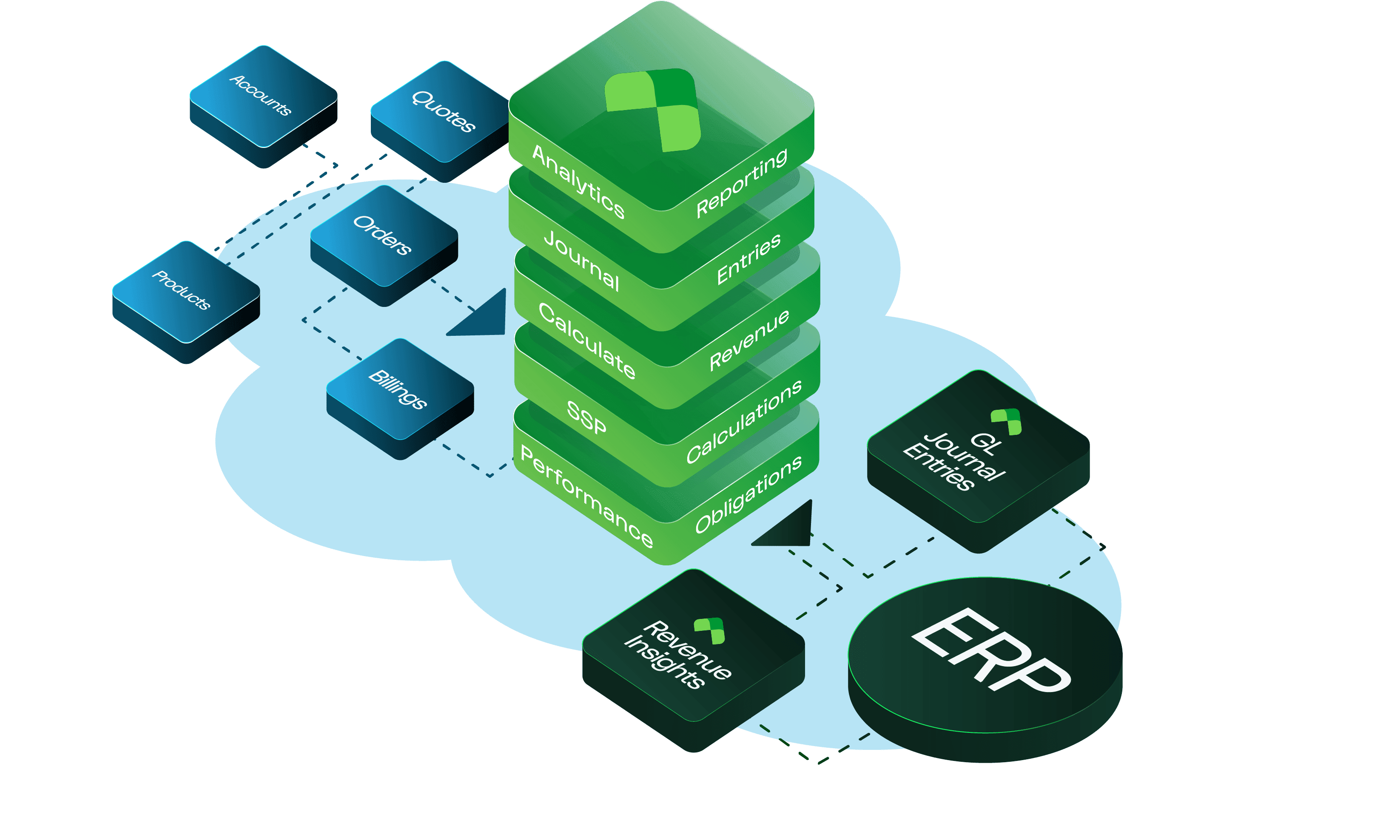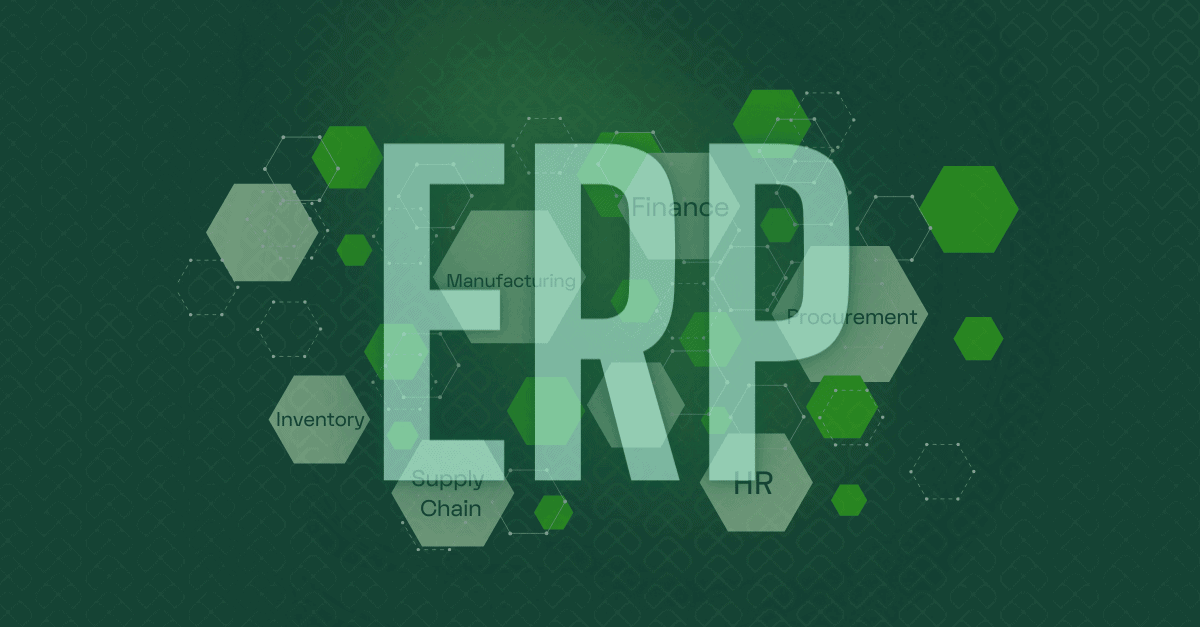To keep pace with the competition, sales teams must improve the effectiveness of their selling tactics, which involves improving existing sales methodologies and processes, better alignment, better data and insights on prospects and high-value customers, and making use of diverse selling methods such as cross-selling, bundling, discounting, and packaging to focus on sales profitability.
Meanwhile, finance teams need the flexibility and scalability to support these diverse revenue models, which adds complexity to revenue reporting under ASC 606. Therefore, sales and finance operations need flexible solutions that comply with revenue requirements for current and new sales models without disruption to the deal cycle.
Sales and Finance Complexity
Finance professionals spend most of their time reconciling data to generate recurring reports that influence business decisions cross-functionally. The highly anticipated and time-consuming deferred revenue report is made possible because data is pulled together from multiple files to prepare a comprehensive view, one that must also be tied down to the penny.
As masters at finding needles in haystacks, revenue accountants must justify a delta and communicate with the teams that own the process for bookings and billings to nudge them to correct the errors that result in tedious reconciliations for revenue accounting.
Inefficient processes and lack of visibility to contract source data, burden finance teams with manual tasks and carefully controlled libraries of shared files that prevent efficiency and growth.
Businesses looking to adapt to new revenue models and offerings face pushback from revenue teams because manual accounting processes are not sustainable. Budgeting for additional headcount to maintain processes creates temporary relief but it does not mitigate the risk of aggregating data from disparate systems and manual calculations for reporting.
Complexity in revenue recognition processes stems from the adoption of universal revenue standards and the lack of flexibility within traditional financial systems to support modern revenue [sales] models. There are many factors that create complexity for both sales and finance teams alike. For example, quoting and order management tools designed to capture contract details for bookings and fulfillment, often lack the flexibility to make updates when faced with customer satisfaction issues.
As a result, multiple versions of the same contract are created. However, when contract adjustments are only possible by backing out the original booking or canceling the original billings, the downstream impact of manual aggregation and reconciliation is passed down to the revenue team. Data continuity is almost impossible across siloed systems and the risk of either revenue leakage or duplicating revenue for the same contract becomes greater.
Another factor that creates complexity for finance teams is the lack of visibility into sales contracts and the ability to define revenue policies at the start of the contract. Sales, Revenue, and Billing teams have co-existed as independent entities within a business, each department fulfilling its role in the Quote-to-Cash process.
Many companies with linear business models continue to operate this way. But with the adoption of customer-centric sales models and ASC 606, the assessment of revenue policy for all aspects of a sales contract magnified an already reactive approach of unsustainable accounting practices.
The Role of Software in Marrying Sales and Finance Processes
A new wave of digital transformation for Quote-to-Cash processes led businesses to seek the best in class ERPs, Sales tools, Billing solutions, and system agnostic revenue sub-ledgers, creating an ecosystem of applications that were intended to bridge the gap and automate the inefficiencies of end-to-end contract management processes for compliance and scalability.
But the problem of data continuity remained. Businesses adopted a multiverse of applications that communicate via APIs and require ongoing maintenance for data mapping and data ingestion from one system to another. At each interface, validation for data completeness is required. A carefully orchestrated flow from quote to revenue was the dream.
But when the new set of disparate systems did not speak the same language, data transformation layers were introduced to format data from one system to another and to filter out unnecessary data to reduce transaction volume and improve performance. Implementation costs and timelines increased and once again Finance teams were left without a connected approach to consolidate data from separate systems.
At the peak of this digital transformation and adoption of ASC 606, reporting has become one of the most complex areas to maintain for finance and sales operations teams. The most common challenge faced by analysts (still) is the inability to combine bookings, billings, and revenue data from a single source for operational financial reports, KPIs, and forecasting. Manual consolidation and inconsistency of data create an incomplete picture that prevents strategic enablement for key stakeholders.
The drivers that lead businesses to seek technology enablement to solve inefficient processes, resulted in a multiverse of applications that lack flexibility, are highly customized which require heavy configuration, are not able to adapt to new revenue models quickly and easily, lack visibility and reporting capabilities for combined sales and revenue data, incur added cost for managing multiple system integrations and simply do not create a seamless user experience.
As a result, companies are re-evaluating their vendor capabilities and once again seeking new technology with two things in mind: Flexibility and Application consolidation. Existing product features and audit compliance are must-haves, but beyond these requirements, solving for data accuracy, revenue policies for sales contracts, and access to insights for evolving sales models in a connected system environment is still the dream.
Businesses looking to adapt to customer and market demands are carefully defining new digital transformation requirements taking into consideration current needs and future objectives to scale, grow and support evolving go-to-market strategies. Revenue accountants are at the forefront of this transformation discussion looking for systems to adapt, comply, and facilitate a collaborative and proactive lead-to-revenue approach.

The Solution
Challenging the traditionally siloed sales and finance processes, RightRev was created by a team of revenue and technology experts who understand the importance of compliance, audit controls, data validation, flexibility, and most importantly evolving automation requirements. RightRev’s modern revenue automation design is focused on lead-to-revenue visibility on the Salesforce Revenue Cloud Platform to drive revenue recognition workflows directly from approved Quotes and Orders. RightRev’s advanced automation framework references the approved order data and billings in real-time, to instantly create a revenue contract with pre-configured revenue rules (compliant with ASC 606) for complete lead-to-revenue recognition management and visibility to sales orders and billings data for KPIs and reporting in the same user interface.
RightRev elevates revenue recognition automation by seamlessly connecting contract data to revenue policies that sits on top of Salesforce, therefore sharing a common language and providing users with capabilities to drill through data in connected lead-to-revenue modules. This means that the quote, order, contract, bill, and revenue all share the same source of data attributes and actions that drive automation, controls, and reporting for Salesforce Revenue Cloud customers.
Most revenue recognition automation solutions that were designed to be system agnostic were designed as third-party solutions to bridge “the gap” between sales and finance processes. The focus is on the impact on the back office and solving the pain by creating a rules-driven framework to automate and replace manual processes for accounting under the ASC 606 5-step process, with product capabilities to configure revenue rules by-products, contract grouping, SSP, allocations, analytics, ledger capabilities, and audit controls.
ERPs have tried to do this by enhancing revenue sub-ledger capabilities and improving upon features for ASC 606 accounting, but the upstream data that drives how and when revenue is recognized in the ERP’s new and improved revenue sub-ledgers are still housed in an external quoting and relationship management system like Salesforce CRM and CPQ.
The actions that deem a contract active or closed are duplicated across two systems and often create limitations for how those same contracts are changed/amended. Two sets of product masters and two sets of booking steps for the same contract are synced across applications, but this begs the question, why should there be two mirrored processes for the same contract?
RightRev’s design purposely replaced external data integrations, customized data transformation programs, and duplicative references to price books and product masters with a harmonious data model for complete lead-to-revenue recognition management.
With advanced revenue rules linked to products and order data, its configuration framework facilitates data integrity for automated rule mapping, provides validation of revenue policies with controls to identify outliers without customized workflows, and ensures accurate calculations for posting and complete revenue reporting.
It would be remiss to not recognize that when it comes to Quote-to-Cash automation solutions, one size does not fit all. There are B2C revenue models for example that automatically capture contracts with payments and invoices, for which revenue complexity does not extend beyond recurring revenue schedules that mirror billings. Businesses with traditional revenue recognition for subscription offerings require recurring billing and revenue schedule capabilities that are often described as “simple straight-line revenue”.
But modern subscription offerings, paired with services and consumption models are driving a new business demand that calls for even more flexibility for defining revenue automation requirements. “Simple subscription revenue” has morphed into complex software and service agreements that include trial periods, free of charge consumpton allowance, usage-based tiered pricing, short and long-term contracts with options to extend, renew, and rollover – what happened to simple?
Considering the evolution of pricing and delivery of goods and services for recurring revenue models, businesses shifting to customer-centric offerings are also evaluating the role of quoting and order management solutions for sales operations. Not having a CRM or CPQ often presents revenue automation challenges because traditional contract data mapping is not possible without a customized path to transform data into common attributes.
RightRev’s modern technology allows the flexibility to connect to existing systems with direct APIs to leverage the same advanced revenue automation framework to ingest and export data with hyper-scale technology to match transaction volumes and performance expectations for all revenue models
RightRev’s strategic design and advanced capabilities provide businesses an opportunity to reimagine the way revenue data is captured with a truly connected lead-to-revenue methodology that empowers business teams to spend less time scrubbing data across multiple systems and more time strategically analyzing revenue growth while keeping up with the demands of shifting sales strategies and revenue models.
RightRev and Salesforce Revenue Cloud provide a unique approach to combine sales, billings, and revenue data in a single platform for data accuracy, revenue policy application, and access to insights for current and future revenue models.
Regardless of CRM, RightRev can leverage data from existing CRM’s or databases and connect unique revenue treatment to each product, service, or type of performance obligation to your entire suite of products and services.
To find out how RightRev can help your company to quote and sell seamlessly while streamlining revenue recognition for compliance with the latest accounting requirements, schedule a demo today.
Follow RightRev on LinkedIn to see more revenue recognition insights.



